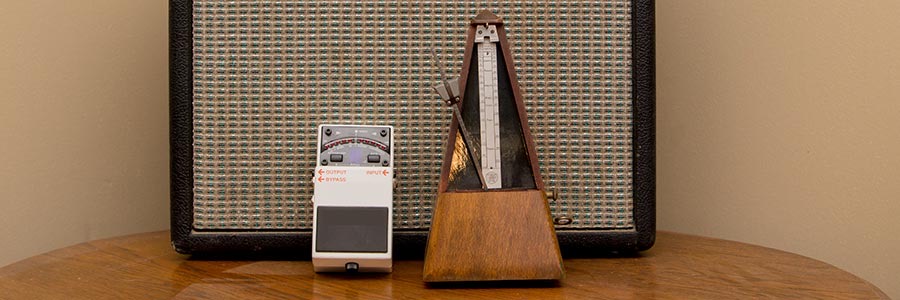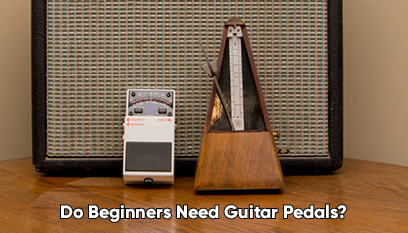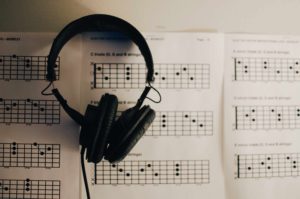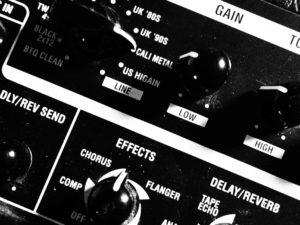 When you’re learning how to play the guitar (or your child is), it’s easy to become overwhelmed by gear. You may wonder whether beginners need guitar pedals, or if they should focus on mastering the technique first.
When you’re learning how to play the guitar (or your child is), it’s easy to become overwhelmed by gear. You may wonder whether beginners need guitar pedals, or if they should focus on mastering the technique first.
Beginners on the electric guitar don’t technically need pedals, other than a tuner. The conservative approach is to learn to play clean before adding distortion and modulation. But there’s nothing wrong with trying out a few pedals! Effects pedals that help you sound like your favorite artists can keep you motivated and excited to continue learning.
Learning to Play Clean First
Focus on Fundamentals
You’ll find varying opinions on how much music theory a beginning guitarist needs to learn, but just like athletic coaches, any music teacher will tell you that focusing on the fundamentals is critical. In my view, the most critical fundamentals you should practice are:
- Using good physical form to avoid straining your hands, wrists, and back
- Making chord shapes correctly and being able to change between them quickly
- Cleanly fretting notes
- Building strength and flexibility in the hands and fingers
- Playing in proper time
Don’t underestimate the importance of the last one. Many people think of piano when they think of metronomes, but a metronome is a great tool for learning guitar, too. The goal of playing with a metronome is to learn how to to line up your playing with a set, and unchanging, tempo. You’ll know that you are making progress when the clicking sound seems to “disappear” when you play, because you’re locked in.
Learning how to keep consistent time will help you down the road. You’ll be able to better follow the lead of a drummer and fit in with other players. If you don’t have an actual metronome, you can use a free one online (metronomeonline.com).
Music Theory vs. Learning Songs: Strike a Balance
Figuring out how to play a song you like can be really fun and rewarding. But you must make sure you are actually learning to play the instrument rather than just a few songs. A guitar teacher can help match particular guitar skills with songs that use those skills, so you are not learning either in isolation. It can be hard to figure that out as a self-taught musician.
I understand the temptation to jump straight to songs. Playing scales is tedious! But eventually you will need to understand a bit of theory to keep improving. Otherwise, you may hit a plateau and become too frustrated to keep playing.
The reverse is also true: you’ll never become an accomplished guitar player just by memorizing music theory concepts.
Sheet Music, Chord Diagrams, and Tablature
Knowing how to read guitar tab and chord diagrams is helpful for learning songs or double-checking songs you have figured out by ear. Some people insist everyone must learn to read sheet music in addition to guitar tab, and others say even reading tab isn’t important until you have mastered the basics of playing. If you’re taking guitar lessons, follow whatever your teacher thinks is the best route, since their expertise is what you are paying for.
Personally, I think people learning to play guitar using YouTube tutorials, etc. are better off forgetting about sheet music for now, unless they are coming to guitar with experience playing other instruments. (I’m not a classically trained guitarist, though. To play classical and jazz guitar, you do need to be able to read sheet music.)
Know the Kind of Player You Want to Be
Obviously, everyone wants to be able to play songs correctly. But beyond that, think about why you’re excited to play guitar. Is being able to improvise important to you, because you want to jam with friends? Do you see yourself writing a lot of your own songs, and maybe performing them for other people? If so, do you want to do your own thing as a singer/songwriter, or are you more interested in playing as part of a band? Figuring out the kind of guitarist you want to be will help you focus on what you need to learn.
Pedals for Beginning Guitarists
The One Pedal You Need: A Tuner
So, you don’t really need effects pedals if you’re starting out. You do need a tuner, though!
Can’t you just tune by ear? Well yeah, if you have a trained ear, or you are a gifted natural musician. But learning to tune by ear if you don’t already know can be frustrating. A tuner pedal saves time and guesswork. Also, if you always play your guitar properly tuned, you will have an easier time telling when it’s out of tune.
A tuner can also help you diagnose problems with your instrument. For example, if you’re noticing that even after tuning your open strings, chords further up the neck aren’t sounding right, you can test each string at different points on the neck to identify the likely culprit(s). That way, you can say something more helpful than “It sounds bad” when you bring your guitar in for a set-up.
If you’re in the market for a tuner, head over to the Best Guitar Tuners page and find one that will meet your needs.
Effects Pedal Recommendations Based on Genre
Let’s say you’ve mastered the basics and you really want to try out some effects pedals. Where do you start? I’ve put together a list of the best pedals for beginners based on the style of music you’re into. You may also like Tips for Testing Out Guitar Pedals at a Store.
What About Multi-Effects Pedals?
A multi-effects pedal can be very appealing for beginners because it’s so versatile. With one piece of equipment, you can play with a dozen different effects! It may also save you some money, depending on how many pedals you were otherwise going to buy. For example, if you are mostly interested in playing blues, a multi-effects pedal lets you play the occasional Metallica tune without buying additional pedals.
So what are the downsides? Quality multi-effects pedals can be expensive. A $200 multi-effects pedal is cheaper than 10 separate pedals, but that doesn’t necessarily make it affordable – especially since you may never use some of the effects. Multi-effects pedals can also be pretty confusing to learn. Figuring out how to use a basic pedal with 2 to 4 knobs usually isn’t hard, but some multi-effects pedals are like computers from the 80s: they have lots of menus you have to work to access.
Multi-Effects Pedals Are Like Treadmills
This isn’t a perfect analogy, but bear with me: Think about a treadmill. You can adjust the incline, the speed, etc. until you’re happy with the result. If you decide 10 minutes into your workout that you want to go a little bit faster or you want the incline to be a little bit steeper, you just hit the big obvious + button and you’re all set. Having individual guitar pedals allows you to control all the effects separately and quickly adjust on the fly.
A multi-effects pedal, on the other hand, is like choosing a pre-set workout option on the treadmill. Let’s say you scan through the choices and pick a combination of settings called “30-Minute Fat-Burn Mountain Level 2.” So far, so good. About 10 minutes in, you decide it’s a little too easy, but you can’t make the treadmill faster or steeper. “30-Minute Fat-Burn Mountain Level 2” is all-or-nothing.
You might really like the workout you get from “30-Minute Fat-Burn Mountain Level 2,” but if you don’t know what the underlying settings are (or if you don’t understand what speed and incline even mean), that is not very useful. In the long run (pun very much intended), beginners are better off learning about the individual effects.



